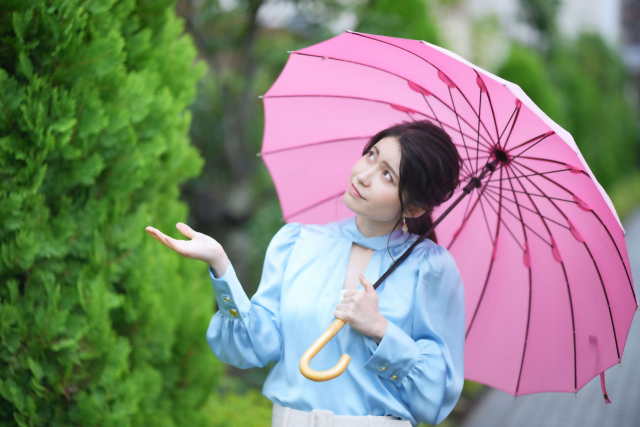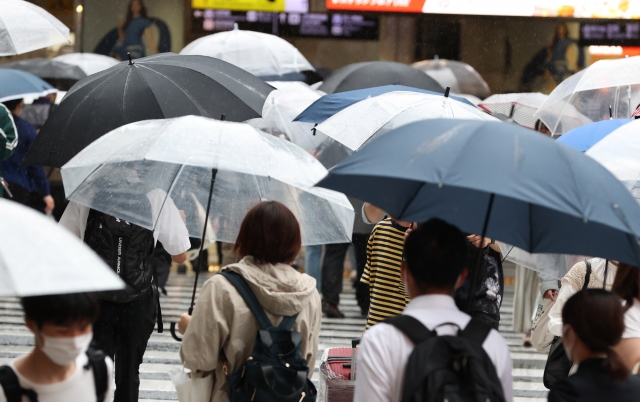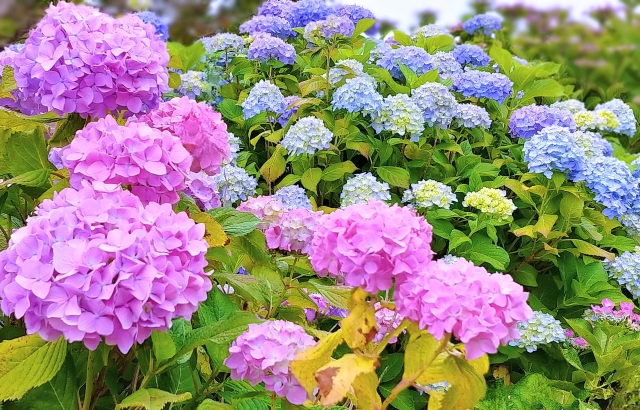The Reality of “Tsuyu”: What You Should Know About Japan’s Rainy Season if You Live Here
2025-05-31
Japanese Culture & Customs

In addition to the four seasons—spring, summer, autumn, and winter—Japan also has a rainy season known as tsuyu (梅雨).
This rainy season marks the beginning of summer, and with its end, the real summer heat begins.
Although the rainy season typically lasts about a month in Japan, it’s common for the rain to drag on for an extended period.
This article introduces the realities of the Japanese rainy season for those considering living in Japan.
We’ll also explain important points to be aware of during this time, as well as ways to enjoy it, so please read to the end.
Basic Knowledge About the Rainy Season
The rainy season refers to a period from around late May to late July characterized by many rainy or cloudy days.
In Japan, the rainy season occurs in all areas except Hokkaido and the Ogasawara Islands.
It’s not unique to Japan—it’s a weather phenomenon also experienced in South Korea, Taiwan, and southern China.
Mechanism of the Rainy Season
During this season, a weather front called the baiu front (梅雨前線) lingers around Japan.
As the weather shifts from spring to summer, air masses with different humidity and temperature levels meet, forming this front.
The baiu front stays near Japan and generates thick rain clouds, causing long periods of rain and cloudy skies in most parts of the country.
Once the front moves northward and away from Japan, the full summer season begins.
Meaning and Timing of Tsuyu-iri and Tsuyu-ake
The beginning of the rainy season is called tsuyu-iri (梅雨入り), and the end is known as tsuyu-ake (梅雨明け).
Since the front moves from south to north, the timing of these events varies by region.
Average timing of the start and end of the rainy season (according to the Japan Meteorological Agency):
| Region | Average Start | Average End |
|---|---|---|
| Okinawa | Around May 10 | Around June 21 |
| Northern Kyushu (incl. Yamaguchi) | Around June 4 | Around July 19 |
| Shikoku | Around June 5 | Around July 17 |
| Chugoku (excl. Yamaguchi) | Around June 6 | Around July 19 |
| Kinki | Around June 6 | Around July 19 |
| Tokai | Around June 6 | Around July 19 |
| Kanto-Koshin | Around June 7 | Around July 19 |
| Hokuriku | Around June 11 | Around July 23 |
| Northern Tohoku | Around June 15 | Around July 28 |
Average data is based on the past 30 years up to 2020 (excluding years without a definitive start/end).
Source: Japan Meteorological Agency “Confirmed Dates of Tsuyu-iri and Tsuyu-ake since 1951.”
Although the Meteorological Agency announces the start and end of the rainy season each year, it is difficult to determine precisely and announcements may later be revised.
These average dates should be used as a general reference only.
The Rain During Tsuyu Accounts for a Large Part of Annual Rainfall

Rainfall during the rainy season is quite heavy, especially in western and eastern Japan, where it can account for one-fifth to one-quarter of the annual rainfall.
While prolonged rain can make people feel gloomy, it plays an essential role by supplying drinking and agricultural water.
If rainfall during this season is insufficient, water shortages may become a serious issue during the summer.
Japan Experiences Rain Outside of the Rainy Season Too
While some countries or regions rarely see rain outside of their rainy season, Japan experiences rainfall throughout the year.
Though not as long-lasting as tsuyu, there are other periods of continuous rain:
-
Nanohana-zuyu (菜種梅雨): Late March to late April
-
Aki-same (秋雨) or Susuki-zuyu (薄梅雨): September to early October
-
Sazanka-zuyu (山茶花梅雨): Late November to early December
Japanese Terms Related to the Rainy Season
Here are some Japanese words and expressions often heard during the rainy season:
-
Kara-tsuyu (空梅雨): A rainy season with little to no rain
-
Naga-tsuyu (長梅雨): A longer-than-usual rainy season
-
Tsuyu-zamu (梅雨寒): Cold temperatures during the rainy season
-
Tsuyu-bare (梅雨晴れ): Brief periods of clear weather during tsuyu
-
Jime-jime: A word describing a damp, humid feeling
-
Shito-shito: An onomatopoeic word for light, continuous rain
Things to Watch Out For During the Rainy Season
If this is your first time experiencing Japan’s rainy season, keep the following in mind:
Understand the Increased Risk of Natural Disasters
Prolonged rain and sudden downpours can increase the risk of water-related disasters.
If you live near a river or flood-prone area, make sure to check evacuation sites and routes and stay alert to emergency information.
It’s also important to prepare an emergency kit just in case.
Take Measures Against Mold and Food Poisoning
The warm and humid conditions during the rainy season make it easy for mold and bacteria to grow.
Store food properly to prevent bacterial contamination.
To prevent mold, use a dehumidifier and wipe down condensation regularly.
Laundry Requires Extra Effort
It’s hard to dry laundry outdoors during the rainy season, leading to concerns like damp clothes and unpleasant odors.
Use antibacterial, anti-mold, and deodorizing detergents to keep clothes fresh.
Consider investing in a washer-dryer combo or using a laundromat to deal with drying issues.
The Rainy Season is Changing Due to Climate Change
The effects of climate change are increasingly visible in Japan’s rainy season.
Heavy downpours during this period are becoming more frequent.
Unprecedented levels of localized rainfall may lead to overwhelmed drainage systems, increasing the risk of floods and landslides.
Some researchers also believe that global warming is shifting the baiu front further north.
This means Japan may experience a rainy season unlike anything seen before.
Enjoying the Rainy Season
Many people may feel that the rainy season limits opportunities for fun and going out.
However, this time of year is known for hydrangeas—beautiful flowers that bloom only during tsuyu.
Hydrangeas look particularly stunning when wet with rain and are beloved in Japan for their seasonal charm.
Temples and parks also take on a tranquil, atmospheric beauty during the rain.
Rather than avoiding the outdoors, embrace the serene ambiance that only rainy days can offer.

Conclusion
For people from countries without a rainy season, Japan’s tsuyu may feel unfamiliar and even cause physical or emotional discomfort.
However, to the Japanese, this is a season of “blessed rain” that nourishes plants and supplies vital water.
With the right precautions, you can still enjoy a comfortable and pleasant life in Japan—even during the rainy season!


